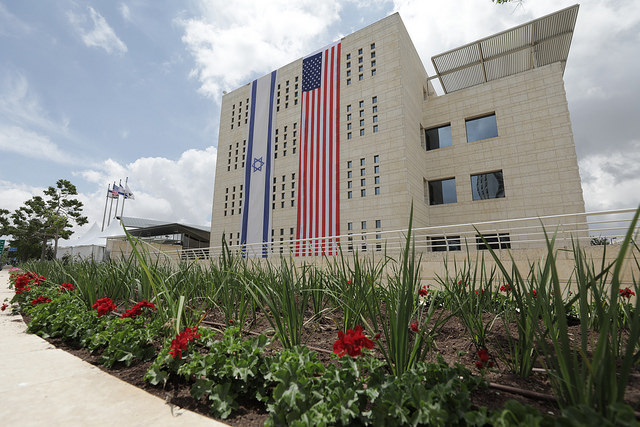As US envoys Jared Kushner and Jason Greenblatt toured the Middle East last month, apparently on the verge of announcing President Donald Trump’s Middle East peace plan, many commentators warned the US to postpone unveiling its plan. ‘The two-state solution is dead’, they said, and in any case it will most certainly be rejected by the Palestinian Authority (PA), which has been boycotting the US since Washington moved its embassy in Israel to Jerusalem.
While friction between Israeli and Palestinian leaders may prevent the parties from sitting at the negotiating table anytime soon, the ingredients for a territorial partition into two states along the 1967 lines continue to exist. And such a partition could become a reality if the Israeli and particularly the Palestinian leaders were ready to make it so.
It’s now 10 years since 2008, when Israeli Prime Minister Ehud Olmert offered the Palestinians a state covering nearly all of the West Bank (with land swaps for settlements), the Gaza Strip and Arab neighbourhoods of east Jerusalem; compensation, resettlement, or both, for Palestinian refugees; and sovereignty over holy sites. His offer was even more far-reaching than the similar offer by Israeli Prime Minister Ehud Barak in 2000–01. All of those offers were effectively rejected by the PA.
The rejections and years of political stalemate have led some Israeli politicians to call for either annexing Israeli settlements or unilaterally withdrawing from parts of the West Bank, as Israel unilaterally withdrew from Gaza in 2005. However, that isn’t the position of the Israeli government, and many Israelis are sceptical of unilateral withdrawal following what happened to Gaza when Israel left: the Islamist terror group Hamas took over the Strip, leading to its deterioration and thousands of repeated rocket attacks on Israel.
Read the article by Sharyn Mittelman in The Strategist.

